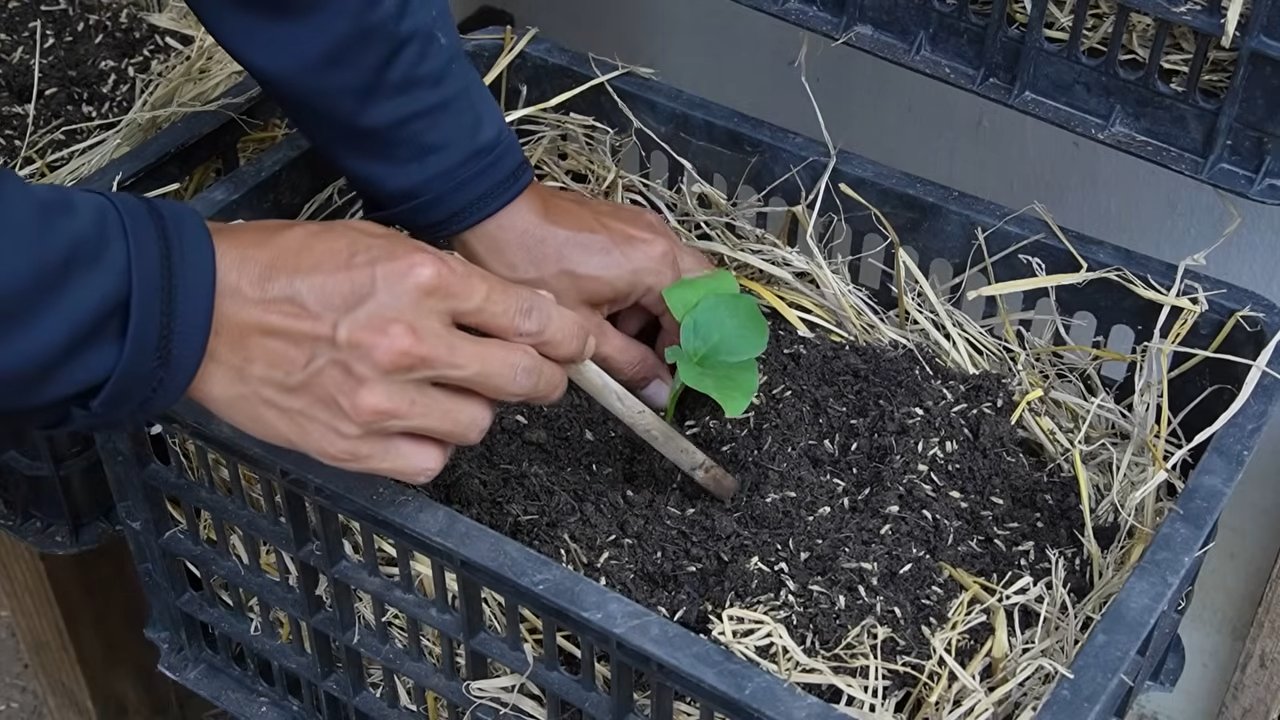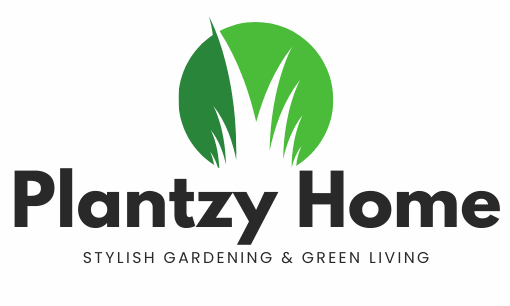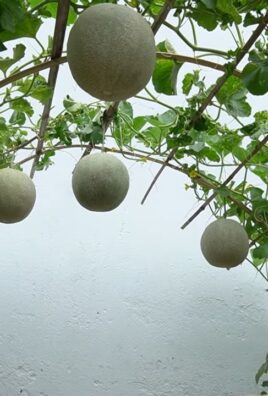Growing Eggplants at Home can seem daunting, I know! But trust me, with a few clever tricks and a little DIY spirit, you can be harvesting your own delicious, glossy eggplants before you know it. Imagine serving up a ratatouille made entirely with ingredients you nurtured from seed – that’s the magic we’re unlocking today!
Eggplants, also known as aubergines, have a rich history, dating back thousands of years to ancient Asia. They weren’t always the plump purple beauties we see today; early varieties came in a range of shapes and colors, including white, resembling goose eggs – hence the name “eggplant.” Throughout history, they’ve been prized for their culinary versatility and even used for medicinal purposes in some cultures.
But why bother with the effort of growing your own? Well, store-bought eggplants often lack the vibrant flavor and freshness of homegrown ones. Plus, let’s be honest, gardening is incredibly therapeutic! And with the rising cost of groceries, learning how to grow your own food, especially something as rewarding as growing eggplants at home, is becoming increasingly important. This DIY guide is packed with simple, effective hacks to help you overcome common challenges, from pest control to maximizing your yield. So, grab your gardening gloves, and let’s get started on your eggplant-growing adventure!

Growing Eggplants at Home: Your Comprehensive DIY Guide
Hello garden friends! I am thrilled to introduce you to the world of growing eggplants today. Eggplants, also known as aubergines, are not only delicious but also beautiful to look at as they grow in the garden. Don’t worry if you’re not an experienced gardener yet. With this step-by-step guide, I’ll show you how you can successfully grow eggplants even without a green thumb. Let’s get started!
Why Grow Eggplants Yourself?
Before we get into the details, let me briefly explain why it’s worth growing your own eggplants:
- Freshness and Flavor: Homegrown eggplants simply taste better! They are riper and more flavorful than those you find in the supermarket.
- Control Over Pesticides: You decide which products you use (or don’t use) to protect your plants.
- Variety of Cultivars: Stores usually offer only a limited selection. In your own garden, you can grow exotic and unusual varieties.
- Satisfaction: It’s just a great feeling to grow and harvest something yourself!
Choosing the Right Variety
Selecting the right eggplant variety is crucial for your success. Here are some popular varieties that are well-suited for home gardens:
- Black Beauty: A classic variety with large, dark purple fruits.
- Ichiban: A Japanese variety with long, slender, shiny fruits.
- Rosa Bianca: An Italian variety with beautiful, pink-striped fruits.
- Little Fingers: A compact variety, ideal for growing in pots.
- Thai Green: A variety with small, round, green fruits.
Tip: Before buying, find out which variety is best suited for your climate and space conditions.
Sowing and Starting Seeds
Eggplants need a long growing season, so it is advisable to start them indoors.
- Sowing Time: Start sowing about 8-10 weeks before the last expected frost. In many regions, this is usually in February or March.
- Sowing Containers: Use seed starter pots or a seed tray. Fill them with seed starting mix.
- Sowing: Place the seeds about 0.5-1 cm (0.2-0.4 inches) deep in the soil. Lightly press the soil and water gently.
- Location: Place the seed containers in a warm and bright place. A temperature of 22-25°C (72-77°F) is ideal for germination.
- Moisture: Keep the soil moist, but not wet. Spray it regularly with a spray bottle.
- Germination: Germination usually takes 1-2 weeks.
- Pricking Out: Once the seedlings have 2-3 true leaves, you can prick them out into larger pots. Use a high-quality vegetable soil for this.
Preparing the Soil
Eggplants are heavy feeders and require nutrient-rich soil.
- Location: Choose a sunny spot with at least 6-8 hours of direct sunlight per day.
- Soil Condition: The soil should be loose, well-draining, and rich in humus.
- Soil Improvement: Before planting, work compost or well-rotted manure into the soil. This improves the soil structure and provides the plants with nutrients.
- pH Level: The ideal pH for eggplants is between 6.0 and 6.8. You can check the pH with a soil test and adjust it if necessary.
Planting Outdoors
Once there is no more danger of frost and the soil temperature is at least 15°C (59°F), you can plant the eggplants outdoors. This is usually from mid-May onwards in many areas.
- Hardening Off: Before planting the plants outdoors, you should harden them off for a few days. Place them outside for a few hours during the day and bring them back in at night.
- Plant Spacing: Plant the eggplants 45-60 cm (18-24 inches) apart.
- Planting Hole: Dig a planting hole that is slightly larger than the root ball.
- Planting: Carefully place the eggplants in the planting holes and fill them with soil. Lightly press the soil and water the plants thoroughly.
- Staking: Eggplant plants can get quite heavy, especially when they bear a lot of fruit. Support them with stakes or a trellis to prevent them from breaking.
Care During the Growing Season
Proper care is crucial for a bountiful harvest.
- Watering: Eggplants need regular water, especially during the flowering and fruiting phase. It’s best to water them in the morning so the leaves can dry during the day. Avoid waterlogging.
- Fertilizing: Fertilize the eggplants every 2-3 weeks with an organic vegetable fertilizer.
- Mulching: Mulch the soil around the plants with straw or grass clippings. This keeps the soil moist, suppresses weeds, and protects the fruit from dirt.
- Pruning: Regularly remove side shoots that grow from the leaf axils. This promotes the formation of larger fruits.
- Pests and Diseases: Watch out for pests like aphids, potato beetles, and spider mites. If necessary, combat them with natural remedies like neem oil or insecticidal soap. Eggplants can also be affected by fungal diseases like mildew. Ensure good air circulation and remove affected leaves.
Harvest
The harvest time depends on the variety and weather conditions. Generally, you can harvest the first eggplants about 60-80 days after planting out.
- Signs of Ripeness: The eggplants are ripe when they have their typical color and feel firm. The skin should be shiny and plump.
- Harvesting Method: Cut the eggplants with a sharp knife or pruning shears. Leave a small stem on the fruit.
- Regular Harvesting: Harvest the eggplants regularly to encourage the formation of new fruits.
Growing Eggplants in a Pot
Even if you don’t have a garden, you can grow eggplants on a balcony or terrace.
- Pot Size: Choose a pot with a diameter of at least 30 cm (12 inches).
- Soil: Use a high-quality vegetable soil.
- Drainage: Ensure good drainage to avoid waterlogging.
- Location: Place the pot in a sunny location.
- Care: Water and fertilize the eggplants regularly. Support the plants if necessary.
Common Problems and Solutions
Deformed Fruit: Deformed fruit can be caused by pests or diseases. Check the plants regularly and combat pests and diseases as needed.
* Sonnenbrand: Bei
Blossom Drop: If the flowers fall off without forming fruit, it could be due to temperatures that are too high or too low, lack of water, or nutrient deficiency. Ensure optimal conditions and fertilize the plants regularly.

Conclusion
So, there you have it! Growing eggplants at home, while it might seem daunting at first, is an incredibly rewarding experience that brings the vibrant flavors of summer right to your table. We’ve explored the essential steps, from selecting the right variety and nurturing seedlings to providing optimal growing conditions and warding off common pests. But why is this DIY approach a must-try?
Firstly, the taste difference is undeniable. Store-bought eggplants often lack the depth and richness of flavor that homegrown varieties possess. When you harvest your own eggplants at their peak ripeness, you’re treated to a sweetness and tenderness that simply can’t be replicated. Plus, you have complete control over the growing process, ensuring that your eggplants are free from harmful pesticides and chemicals. This is especially important if you’re committed to organic gardening and want to provide your family with the healthiest possible produce.
Secondly, growing your own eggplants is a fantastic way to connect with nature and learn about the food you eat. There’s something incredibly satisfying about nurturing a tiny seed into a thriving plant that yields delicious fruit. It’s a hands-on learning experience that can be enjoyed by people of all ages, and it’s a great way to teach children about the importance of sustainable agriculture.
Thirdly, it’s more economical in the long run. While there’s an initial investment in seeds, soil, and other supplies, you’ll quickly recoup your costs as your eggplant plants begin to produce. And if you save seeds from your best-performing plants, you can continue to grow eggplants year after year without having to purchase new seeds.
But the benefits don’t stop there. Growing eggplants at home also allows you to experiment with different varieties and techniques. Why not try growing some exotic Asian eggplants like the long, slender Japanese eggplant or the small, round Thai eggplant? Or perhaps you’d like to experiment with different growing methods, such as container gardening or raised beds? The possibilities are endless!
Consider these variations to enhance your eggplant growing experience:
* Companion Planting: Plant basil, thyme, or marigolds near your eggplants to deter pests and attract beneficial insects.
* Vertical Gardening: If you’re short on space, try growing your eggplants in containers and training them to grow up a trellis or stake.
* Grafting: Grafting eggplant scions onto more vigorous rootstocks can improve disease resistance and increase yields.
Ultimately, growing eggplants at home is a journey of discovery and experimentation. Don’t be afraid to try new things, learn from your mistakes, and most importantly, have fun! We encourage you to take the plunge and experience the joy of harvesting your own delicious, homegrown eggplants.
And once you’ve harvested your bounty, be sure to share your experiences with us! We’d love to hear about your favorite varieties, your most successful growing techniques, and your most delicious eggplant recipes. Share your photos and stories on our social media channels using #HomegrownEggplant. Let’s build a community of eggplant enthusiasts and inspire others to discover the joys of growing their own food. So, get your hands dirty and start growing those eggplants! You won’t regret it.
Frequently Asked Questions (FAQ)
What are the best eggplant varieties to grow at home?
The “best” variety depends on your climate, growing space, and personal preferences. However, some popular and reliable choices for home gardens include:
* Black Beauty: A classic, large, dark purple eggplant with a mild flavor. It’s a reliable producer and relatively easy to grow.
* Ichiban: A long, slender Japanese eggplant with a delicate flavor and tender skin. It’s a good choice for grilling or stir-frying.
* Fairy Tale: A small, striped eggplant with a sweet, non-bitter flavor. It’s a good choice for container gardening and is often ready to harvest earlier than other varieties.
* Rosa Bianca: An Italian heirloom eggplant with a beautiful pink and white striped skin and a creamy, mild flavor.
* Thai Green: Small, round, green eggplants that are popular in Thai cuisine. They have a slightly bitter flavor and are often used in curries and stir-fries.
Consider your local climate and growing conditions when selecting your eggplant varieties. Check with your local nursery or garden center for recommendations on varieties that are well-suited to your area.
How much sun do eggplants need?
Eggplants are sun-loving plants and require at least 6-8 hours of direct sunlight per day to thrive. Insufficient sunlight can lead to stunted growth, reduced yields, and poor-quality fruit. Choose a planting location that receives full sun throughout the day. If you’re growing eggplants in containers, make sure to place them in a sunny spot.
What kind of soil do eggplants prefer?
Eggplants prefer well-drained, fertile soil that is rich in organic matter. The ideal soil pH is between 6.0 and 6.8. Before planting, amend your soil with compost, aged manure, or other organic matter to improve drainage and fertility. If your soil is heavy clay, consider growing your eggplants in raised beds or containers.
How often should I water my eggplants?
Eggplants need consistent moisture to thrive, especially during hot, dry weather. Water deeply and regularly, aiming to keep the soil consistently moist but not waterlogged. Check the soil moisture regularly by sticking your finger into the soil. If the top inch of soil feels dry, it’s time to water. Avoid overhead watering, as this can promote fungal diseases. Instead, water at the base of the plant.
What are some common pests and diseases that affect eggplants?
Eggplants are susceptible to a variety of pests and diseases, including:
* Flea Beetles: Small, jumping beetles that chew small holes in the leaves.
* Aphids: Small, sap-sucking insects that can weaken plants and transmit diseases.
* Spider Mites: Tiny mites that suck sap from the leaves, causing them to turn yellow and stippled.
* Tomato Hornworms: Large, green caterpillars that can defoliate plants.
* Verticillium Wilt: A fungal disease that causes wilting and yellowing of the leaves.
* Early Blight: A fungal disease that causes dark spots on the leaves.
To prevent pests and diseases, practice good garden hygiene, such as removing weeds and debris, and rotate your crops regularly. Inspect your plants regularly for signs of pests or diseases and take action promptly. Organic pest control methods, such as insecticidal soap, neem oil, and Bacillus thuringiensis (Bt), can be effective against many common pests.
When should I harvest my eggplants?
Eggplants are typically ready to harvest 65-80 days after transplanting, depending on the variety. Harvest your eggplants when they are firm, glossy, and have reached their mature size and color. The skin should be smooth and unblemished. Gently twist or cut the eggplant from the plant, leaving a small stem attached. Overripe eggplants will become dull, soft, and bitter.
Can I grow eggplants in containers?
Yes, eggplants can be successfully grown in containers, especially smaller varieties like Fairy Tale. Choose a container that is at least 12 inches in diameter and 12 inches deep. Use a high-quality potting mix and provide regular watering and fertilization. Container-grown eggplants may need to be staked or supported to prevent them from toppling over.
How do I save seeds from my eggplants?
Saving seeds from eggplants can be a rewarding way to perpetuate your favorite varieties. Allow the eggplant to fully ripen on the plant until it becomes dull and slightly soft. Cut the eggplant open and scoop out the seeds. Rinse the seeds thoroughly to remove any pulp. Spread the seeds out on a paper towel to dry completely. Once dry, store the seeds in an airtight container in a cool, dark, and dry place.




Leave a Comment